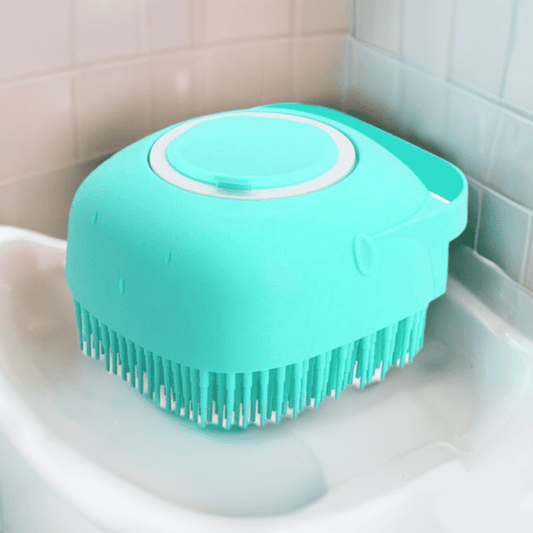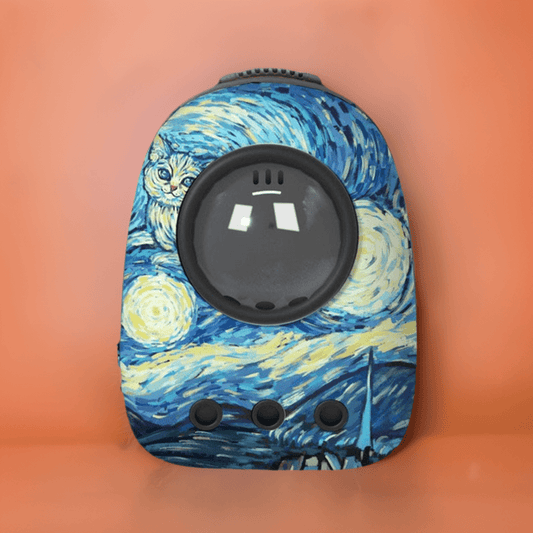Are you a devoted cat owner, tired of battling persistent stains and unpleasant odors in your home? Whether you're a seasoned cat parent or a newbie, dealing with cat stain and odor issues can be quite a challenge. Cats are incredible companions, but accidents are part of the package. However, fret not! In this extensive guide, we'll delve into the world of cat stain odor removers, explore the best options available, and uncover the science behind enzyme cleaners – the game-changer in the battle against feline messes.
Understanding Cat Stain and Odor Problems
Cat stains and odors can be a real headache for pet owners. Cats sometimes choose to urinate or vomit outside the litter box, leaving behind unsightly messes that emit unpleasant odors. But before we dive into the solutions, let's first understand why these issues occur and persist.
Cats boast a highly developed sense of smell, which means if a spot has been soiled once, they may return to it. This behavior can create a cycle of re-soiling that's difficult to break. To tackle this problem effectively, we need to go beyond superficial cleaning and address the root causes.
One way to combat these issues is by understanding your cat's behavior. Is your feline friend stressed? Have there been any changes in their routine or environment? Identifying the triggers can be the first step in preventing future incidents. Moreover, consider consulting your veterinarian to rule out any underlying medical conditions that might be contributing to the problem.
The Science Behind Enzyme Cleaners
Now, let's delve into the fascinating world of enzyme cleaners – the superheroes of stain and odor removal. Enzyme cleaners work by using natural enzymes to break down the organic matter responsible for both the stain and the odor. Think of these enzymes as tiny molecular warriors, dismantling the mess molecule by molecule.
Enzyme cleaners differ from regular cleaners, which often merely mask the smell temporarily without addressing the underlying issue. The enzymes in these cleaners target the root cause of the problem, ensuring that the stain and odor are eliminated completely. This is not just a quick fix; it's a long-lasting solution.
When choosing an enzyme cleaner, look for those with a high enzyme concentration. The higher the concentration, the more effective the cleaner is at breaking down the organic matter. Additionally, opt for products that are safe for your pets and the environment, as they offer a more holistic solution to your cat stain odor problems.
Choosing the Best Cat Stain Odor Remover
Selecting the right cat stain odor remover is crucial for effective stain and odor removal. Not all products are created equal, so consider the following factors when making your choice:
1. Enzyme Concentration: Look for products with a high enzyme concentration for maximum effectiveness in breaking down stains and odors.
2. Safety for Pets: Ensure that the cleaner you choose is safe for your beloved furry friend. You don't want to solve one problem while creating another.
3. Type of Stain: Different cleaners excel at treating specific types of stains, such as urine, vomit, or feces. Be sure to choose one that's appropriate for your specific situation.
4. Fragrance: While some cleaners have added fragrances to mask odors, be cautious if your cat is sensitive to scents. Opt for unscented options if needed.
5. Eco-Friendly Options: If you're environmentally conscious, there are eco-friendly cat stain odor removers available that are effective and gentle on the planet.
Consider reading reviews and seeking recommendations from fellow cat owners to find the best cat stain odor remover for your unique needs. Remember, a well-chosen product can make all the difference in keeping your home fresh and clean.
How to Use Cat Stain Odor Removers Effectively
Choosing the right cat stain odor remover is just the first step. To achieve the best results, you need to know how to use it effectively. Follow these steps for optimal stain and odor removal:
1. Blot, Don't Rub: When you discover a fresh stain, blot it gently with a clean cloth or paper towel to absorb excess liquid. Avoid rubbing, as this can spread the mess further.
2. Apply the Cleaner: Follow the instructions on the product label for application. Ensure you saturate the affected area thoroughly to allow the enzymes to work their magic.
3. Allow Time to Work: Enzyme cleaners require some patience. Give the cleaner time to break down the mess, following the recommended duration on the label.
4. Blot Again: After the waiting period, blot the area again to remove any remaining moisture and cleaner residue.
5. Rinse and Dry: Finally, rinse the area with water and allow it to dry completely. This ensures that no residue or odor lingers.
By following these steps, you'll maximize the effectiveness of your chosen cat stain odor remover and say goodbye to those stubborn stains and odors.
Homemade Remedies vs. Commercial Cleaners
While homemade remedies like vinegar and baking soda can be effective for some stains and odors, they may not always match the power of commercial cat stain odor removers. Homemade solutions are often better suited for minor incidents or as a temporary fix until you can get your hands on a dedicated cleaner.
It's essential to assess the severity of the stain or odor when deciding between homemade remedies and commercial cleaners. For persistent and tough stains, investing in a high-quality enzyme cleaner is often the best choice. These cleaners are formulated specifically to tackle the organic matter responsible for the odors, ensuring a thorough and lasting clean.
That said, if you prefer a more natural approach or need a quick fix for a minor issue, homemade remedies can be a handy option. Just remember that they may not be as effective on deeply embedded stains and odors.
Spot Cleaning vs. Deep Cleaning
When it comes to keeping your home free of cat stain odors, it's essential to incorporate both spot cleaning and deep cleaning into your routine.
Spot cleaning involves addressing fresh stains as they occur. This immediate action helps prevent the stain from setting in and the odor from becoming entrenched. By promptly blotting and treating the area with your chosen cleaner, you can often prevent long-term damage to your carpets, furniture, or flooring.
Deep cleaning, on the other hand, is a more comprehensive approach. It's crucial for tackling old, set-in stains and odors that may have been lingering unnoticed in your home. Deep cleaning should be part of your regular cleaning routine to ensure that hidden odors are eliminated.
Consider investing in a quality carpet cleaner with a specific attachment for pet stains. These machines can help you deep clean your carpets effectively, ensuring that even the most stubborn odors are banished.
Preventing Future Incidents
While dealing with current cat stain and odor problems is essential, preventing future incidents is equally crucial. Here are some proactive steps you can take to minimize the chances of your cat having accidents in the house:
1. Regular Litter Box Maintenance: Keep your cat's litter box clean and change the litter regularly. Cats are more likely to use a clean box.
2. Stress Reduction: Minimize stressors in your cat's environment. Cats are sensitive creatures, and changes in their routine or surroundings can lead to anxiety and accidents.
3. Proper Diet: Ensure your cat's diet is suitable for their age and health. Consult with your veterinarian to select the right food.
4. Medical Check-ups: Schedule regular vet visits to identify and address any underlying health issues that might be contributing to your cat's behavior.
By taking these preventive measures, you can create a more comfortable and stress-free environment for your feline friend, reducing the likelihood of future accidents.
The Importance of Quick Action
When it comes to cat stain and odor removal, time is of the essence. The longer a stain or odor lingers, the more challenging it becomes to remove. Having a reliable cat stain odor remover on hand allows you to respond promptly to accidents, increasing your chances of success.
Remember, cats have a keen sense of smell, and they may be drawn back to a previously soiled spot if it's not adequately cleaned. By acting quickly and effectively, you can break the cycle of re-soiling and maintain a clean and odor-free home.
Safety Concerns for Your Pets
While tackling cat stain and odor problems, never compromise on your pet's safety. Some cleaning products contain harsh chemicals that can be harmful to cats and other pets. To ensure your furry friend's well-being, opt for cleaners specifically formulated to be safe for animals.
Look for products that are non-toxic, hypoallergenic, and free from harsh chemicals like bleach or ammonia. Additionally, always follow the manufacturer's instructions and keep cleaning products out of your pet's reach.
Eco-Friendly Options
If you're environmentally conscious, you'll be pleased to know that there are eco-friendly cat stain odor removers available. These products are designed to be effective while minimizing their impact on the environment.
Eco-friendly options often feature biodegradable packaging and use natural, plant-based ingredients instead of harsh chemicals. By choosing eco-friendly cleaners, you can maintain a clean home while reducing your carbon footprint.
Top Brands for Cat Stain Odor Removers
When it comes to quality and effectiveness, some brands stand out in the world of cat stain odor removers. Here are a few top contenders known for their reliable products:
- Nature's Miracle
- Rocco & Roxie
- BUBBAS
- Simple Solution
These brands have gained the trust of cat owners worldwide by consistently delivering products that effectively tackle stains and odors while prioritizing safety for pets.
Reading Reviews: What to Look For
Before making a purchase, it's a good idea to read reviews from other cat owners. Customer reviews can provide valuable insights into a product's performance and effectiveness. Look for reviews that mention the following key points:
- Effectiveness: Does the product effectively remove stains and odors?
- Ease of Use: Is it easy to apply and does it work quickly?
- Safety for Pets: Are there any mentions of the product being safe for pets?
- Fragrance: If the product has a scent, does it bother cats or trigger allergies in humans?
While individual experiences may vary, patterns in reviews can be highly informative and help you make an informed decision when selecting a cat stain odor remover.
Homemade Cat Stain Odor Removers
Here are five homemade remedies for removing cat stains and odors:
-
Vinegar and Baking Soda Solution:
- Mix equal parts of white vinegar and water in a spray bottle.
- Thoroughly saturate the stained area with the solution.
- Sprinkle baking soda over the wet area.
- Allow the solution to sit for 15-20 minutes or until it dries.
- Once dry, vacuum up the baking soda residue.
- This remedy helps neutralize odors and lift stains.
-
Hydrogen Peroxide and Dish Soap Mixture:
- Combine one part hydrogen peroxide (3%) with two parts water.
- Add a few drops of dish soap to the mixture.
- Apply the solution to the stain, ensuring it's well-saturated.
- Gently blot the area with a clean cloth or paper towel.
- Rinse the area with clean water and blot again.
- This mixture can effectively break down stains and eliminate odors.
-
Citrus Enzyme Cleaner:
- Collect citrus peels (e.g., from oranges, lemons, or grapefruits) and place them in a jar.
- Add equal parts water and white vinegar to the jar.
- Seal the jar and let it sit for a few weeks to allow the citrus enzymes to develop.
- Strain the liquid into a spray bottle.
- Spray the homemade citrus enzyme cleaner on the stain and let it sit for 10-15 minutes before blotting.
- The natural enzymes in citrus peels help break down stains and leave a pleasant fragrance.
-
Club Soda:
- Blot the fresh stain with a clean cloth to remove excess moisture.
- Pour club soda directly onto the stain.
- Blot the area again to soak up the club soda along with the stain.
- Club soda's carbonation can help lift stains and reduce odors.
-
Cornstarch or Talcum Powder:
- For wet stains, blot the area to remove excess moisture.
- Sprinkle a generous amount of cornstarch or talcum powder over the stain.
- Allow it to sit for several hours or overnight to absorb the moisture and odor.
- Vacuum up the powder residue.
- This method can help with freshening the area and reducing moisture-related odors.
Remember to test any homemade remedy on a small, inconspicuous area first to ensure it doesn't damage or discolor your carpet or upholstery. Additionally, always blot rather than rub when treating stains to prevent them from spreading.
Frequently Asked Questions (FAQs)
1. What's the difference between enzyme cleaners and regular cleaners?
Enzyme cleaners contain enzymes that break down the organic matter responsible for stains and odors, addressing the root cause. Regular cleaners often mask the odor temporarily without tackling the underlying problem.
2. Can I use cat stain odor removers on carpets and upholstery?
Yes, most cat stain odor removers are safe for use on carpets, upholstery, and other surfaces. However, it's essential to follow the product's instructions for the best results.
3. How do I choose the right enzyme cleaner for my cat's mess?
When selecting an enzyme cleaner, consider factors like enzyme concentration, safety for pets, and the type of stain you're dealing with. High enzyme concentration cleaners are often more effective.
4. Are homemade remedies as effective as commercial cat stain odor removers?
Homemade remedies can work for minor incidents, but commercial cleaners are generally more potent for tough stains and odors. Commercial products are specifically formulated for this purpose.
5. Can cat stain odor removers be used preventively?
While cat stain odor removers are primarily designed for cleaning up after accidents, using them preventively on problem-prone areas can help deter cats from re-soiling. However, addressing the root causes of your cat's behavior is crucial for long-term success.
In conclusion, cat stain and odor removers are invaluable tools for cat owners. Understanding the science behind enzyme cleaners, choosing the right product, and using it effectively can keep your home clean and odor-free. Remember to prioritize your pet's safety and consider eco-friendly options to make the best choice for your furry friend and the environment. Say goodbye to cat stain odors and enjoy a fresh-smelling home once more!



